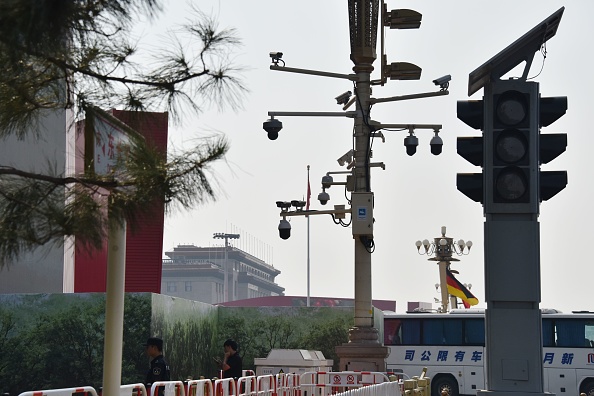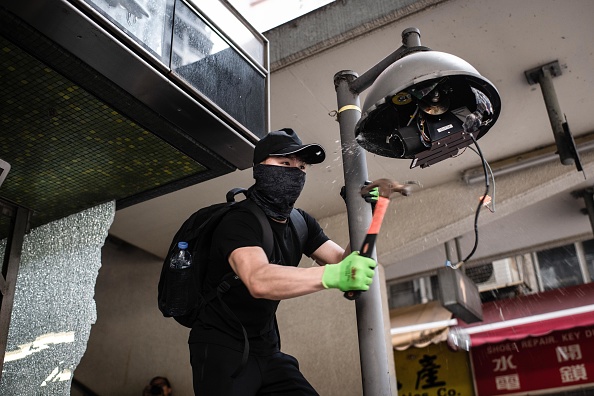Few countries commemorate historical milestones with the zeal of the People’s Republic of China (PRC), and 2019 offers a bonanza of celebratory opportunities: 40 years since Deng Xiaoping launched the economic reforms that opened China to the rest of the world; 40 years since China and the United States established diplomatic relations; and, on October 1, 70 years since the founding of the PRC. These events provide the Chinese Communist Party (CCP) opportunities to laud past achievements, legitimize the course it has set for the country, and rally support for challenges yet to come. And as Chinese President Xi Jinping surveys the country’s progress, he can point to any number of extraordinary economic, social, and geopolitical achievements.
Outside observers tend to credit the Deng-era reforms for China’s meteoric rise. But Xi and the rest of the Chinese leadership are more focused on the earliest years of the PRC—when Mao Zedong sat at the helm of the Communist Party. Like Mao, Xi has prioritized strengthening the party, inculcating collective socialist values, and rooting out nonbelievers. Like Mao, who invoked “domestic and foreign reactionaries” to build nationalist sentiment and solidify the party’s legitimacy, Xi has adopted a consistent refrain of unspecified but “ubiquitous” internal and external threats. And like Mao, Xi has encouraged the creation of a cult of personality around himself.
Yet Xi has revived the methods and symbols of Maoism not in service of a return to the past but in order to advance his own transformative agenda, one that seeks to ensure that all political, social, and economic activity within, and increasingly outside of, China serves the interests of the CCP. He is creating a model that reasserts the power of the Communist Party; progressively erases the distinction between public and private in both the political and economic spheres; and seeks to integrate foreign actors, including private businesses, more deeply into a system of CCP values and institutions. Xi also aspires to accomplish what Mao and his successors could not: to render irrelevant the political and physical boundaries separating Taiwan and Hong Kong from the mainland, and to offer China as a legitimate model for other countries disinclined toward liberal democracy.
PARTY LIKE IT’S 1949
Party ideology increasingly pervades everyday life in China, narrowing the space for the expression of alternative views. The government heavily censors the Internet; limits foreign television content; and has called for schools to be “strongholds of Party leadership,” punishing professors for using unapproved texts or “defaming the rule of the Communist Party.” At the same time, Xi’s contribution to CCP theory, known as Xi Jinping Thought on Socialism with Chinese Characteristics for a New Era, is pumped relentlessly through the system: more than 100 institutes devoted to Xi Jinping Thought have sprung up over the past few years; a phone app, Study Strong Country, offers mandatory quizzes for party members on Xi’s thoughts and activities; and college entrance exams even now feature political questions tied to the leader’s campaigns and sayings—a practice, journalist Zheping Huang notes, that was popular during Mao’s tenure.
The CCP also seeks to shape the daily choices of its citizens, influencing their behavior to better reflect the interests of the party. One element of this enterprise is the social credit system, an ambitious experiment in social engineering designed to evaluate the trustworthiness of Chinese citizens and condition their behavior through punishments and rewards. Underway in more than 40 pilot programs throughout the country, the social credit system is slated to be rolled out nationally in 2020. As the China scholar Rogier Creemers has observed, this system is about “doing things that are right and incentivizing things that are right. But right is not something that people get to sort out for themselves. It doesn’t call upon individual moral autonomy, rather it calls upon obeisance to, and compliance with, a certain state-defined version of the good.”
In one pilot program in eastern China, for example, people receive points for donating bone marrow or performing other good deeds, but lose points for late payment of bills or traffic tickets. Other programs penalize citizens for participating in protests. While much of this tracking and accounting is done with technology, the CCP has also revived Mao-era tactics: paying elderly residents to report on the behavior of their neighbors, publicly celebrating model citizens while shaming those who fall short. As one government document noted, the objective of the social credit system is to “allow the trustworthy to roam everywhere under heaven while making it hard for the discredited to take a single step.” It is a motto that can be taken literally: in 2017, more than six million Chinese were barred from air travel as a result of social credit misdeeds.
The party keeps watch through almost 200 million cameras capable of recognizing faces within a matter of seconds. In rural areas, the surveillance system is called “sharp eyes,” a name reportedly drawn from a Mao-era slogan—“the people have sharp eyes”—that encouraged people to denounce fellow citizens who diverged from officially sanctioned behavior. While cameras might be justified to reduce crime, it is harder to defend other intrusive technologies such as Police Cloud, a platform that allows the police to collect personal data on everything from where people shop to their health records, and MFsocket and Fengcai, two apps that enable the police to extract data such as location, images, and audio files from private mobile phones. Many Chinese have taken to the web to complain about these secret surveillance efforts, and some now carry two phones to protect their privacy in case of a random police stop.

PRIVATE IS PUBLIC
Xi is also intruding into the private economic sphere, extending the CCP’s reach into not only state-owned but also private-sector firms. He has empowered party committees within private Chinese companies and joint ventures, permitting these purely political bodies to play a larger role in investment and other business decisions. In cities across China, local governments are also dispatching officials to work in private companies for up to a year to “help on government matters.” The work of all firms, public and private, must now reflect party priorities.
Beijing is even exerting more control over foreign citizens and companies, which have traditionally been exempted from political campaigns. Foreign nongovernmental organizations operating in China, which saw their number culled from more than 7,000 to roughly 600 following the passage of a restrictive NGO law in 2017, are now subjected to onerous reporting requirements and their leaders and activities are closely monitored by local public-security bureaus.
Multinationals, too, must contend with a raft of challenging new party initiatives, such as the newly assertive party committees and required participation in the country’s social credit system. By the end of 2020, multinationals will reportedly be subjected to an evaluation based on as many as 300 metrics. Some of these metrics will likely reflect Chinese laws on the environment and worker safety. It is easy to imagine, however, more troublesome demands for achieving a good social credit score, such as sourcing from Chinese suppliers, investing in less developed regions, or supporting Beijing’s interests globally. China has already demanded that multinationals not list Taiwan as a separate entity on their websites. More such requirements could be on the horizon.
THE IMPOSSIBLE DREAM
Reclaiming sovereignty over Hong Kong and Taiwan is central to Xi’s transformative project. He has stated explicitly that unification is “an inevitable requirement for the great rejuvenation of the Chinese people.” In his vision, the geographic, economic, and political barriers that separate the mainland from Taiwan and Hong Kong are artificial and temporary constructs. To break them down and encourage greater integration, Beijing has adopted a number of inducements, such as economic benefits for businesses investing in the mainland, and coercive measures, such as interfering in Taiwan’s most recent local elections on behalf of pro-mainland politicians.
Yet in neither place is there much appetite for the type of closer political and economic integration that Xi seeks. In Hong Kong, for instance, the territory’s Beijing-backed chief executive introduced an extradition law in March that would have eroded the “one country, two systems” construct that gives Hong Kong a degree of political and economic autonomy. The move provoked months of mass protests, which did not end even after the chief executive promised to withdraw the bill. Beijing’s coercive diplomatic and economic policies toward Taiwan, and its meddling in the island nation’s internal politics, have likewise diminished the already limited support within Taiwan for any form of reunification with the mainland. The message to Xi from both Hong Kong and Taiwan is clear: they have seen what the Chinese president has to offer and have found it wanting. Hong Kong and Taiwan are also persistent reminders to mainland Chinese of their own potential alternative political futures.
Xi did not allow lack of support for his vision in Hong Kong and Taiwan to mar his triumphal 70th anniversary celebration. Still, he must recognize that they represent the ultimate paradox: the tighter he embraces Mao’s political legacy, the less likely he is to realize his Chinese dream of reunification. And to use force to achieve reunification would be the ultimate failure—an admission that his model is not, in fact, a true alternative to liberal democracy.

This article was originally published on ForeignAffairs.com.









